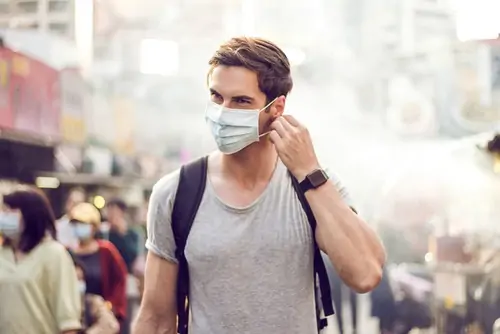
If wearing your mask has caused you to change the way you breathe, you’re not alone. Most of us are still getting used to wearing masks day after day, hour after hour, and many of us may have felt the need to adjust from breathing out of noses to breathing out of our mouths as a result. But can this change in breathing have oral health side effects? Your dentist in Clyde is here with the answer.
*A Quick Note
We need to first address the importance of continuing to wear a mask when in public or around people. The information included in this blog does not outweigh the overall benefits and protection offered from wearing a mask. We also provide tips on how to overcome the side effects discussed. Please continue wearing a mask whenever you’re around others or in a public space.
Mouth Breathing & Oral Health
We’re all probably familiar with what dry mouth feels like, but let’s have a refresher. Take a few deep breaths using only your mouth. Do you feel that dry, desert-like feeling? Do you feel like you need to take a drink or that you need to keep swallowing? That’s dry mouth and it’s what happens when we mouth breathe. Dry mouth is a result of a lack of saliva, and it’s something that concerns your dentist in Clyde.
Saliva is a crucial part of a healthy mouth as it helps neutralize acids and wash away harmful bacteria. But without it, or enough of it, these bacteria and acids are left untouched and can cause damage. And that’s not all. The bacteria feed on leftover food particles and release an acidic byproduct, which just means more acid is around to cause more damage.
Acid Leads to Cavities
The problem with too much acid in the mouth is that it can easily wear down tooth enamel and leave teeth exposed to bacteria. As the cycle of bacteria and acid production continues, the more likely it is that a cavity, or several cavities, will form.
Bacteria Leads to Bad Breath
While we now know that bacteria can contribute to the development of cavities, we also need to know that elevated levels of bacteria can also cause bad breath. The truth is, mouth bacteria release sulfur compounds, and it’s these stinky sulfur compounds that cause bad breath.
Ways to Prevent Dry Mouth
Dry mouth can occur from mouth breathing but it can also be caused by certain medications, health conditions, or tobacco use. But there are ways you can prevent or reduce the effects of dry mouth such as:
While we’re still encouraged to wear masks, try your best to breathe out of your nose instead of your mouth. However, if mouth breathing is more comfortable, make sure you’re doing everything you can to keep your mouth hydrated. If you do start to experience dry mouth, call your dentist in Clyde. There are ways your dentist can further treat dry mouth so you can get relief.